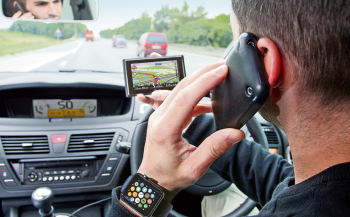Researchers developed an advanced rating scale to measure the visual and cognitive demands and the time it took to complete a task experienced by drivers using each vehicle’s infotainment system. The scale ranged from low to very high levels of demand. A low level of demand equates to listening to the radio or an audiobook, while very high demand is equivalent to trying to balance a checkbook while driving. AAA believes a safe in-vehicle technology system should not exceed a low level of demand.
None of the 30 vehicle infotainment systems produced low demand, while 23 systems generated high or very high levels of demand on drivers.
Programming navigation was the most distracting task, taking an average of 40 seconds for drivers to complete. At 25 mph, a car can travel the length of four football fields during the time it could take a driver to enter a destination in navigation all while distracted from the task of driving.
Drivers want technology that is safe and easy to use, but many of the features added to infotainment systems have resulted in overly complex and sometimes frustrating user experiences for drivers, which can increase cognitive demand and the potential for distracted driving, Donati said.
Researchers found that most infotainment systems tested could easily be made safer by simply following clearly stated federal recommendations such as locking out text messaging, social media and programming navigation while the car is in motion. In 2012, the National Highway Traffic Safety Administration (NHTSA) released a set of voluntary safety guidelines advising automakers to block access to tasks when vehicles are not parked.
A total of 120 drivers ages 21-36 participated in the study of 30 new 2017 model-year vehicles. The latest report is the fifth phase of distraction research from AAA's Center for Driving Safety and Technology. AAA conducts this research to help automakers and system designers improve the functionality of new infotainment systems and their demand on drivers. For more information, visit AAA.com/distraction.























